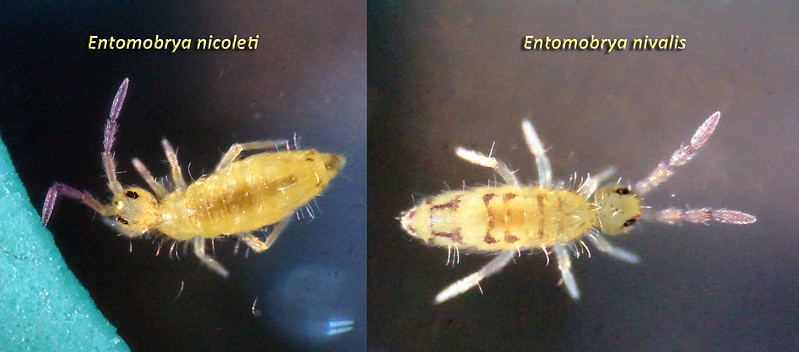
These tough arboreal species are clearly the last to go in dry conditions. However, the Ulverscroft brook still had an inch or so of water flowing, so on the way back I also sampled from vegetation along the banks, and from liverworts and mosses on stones in the stream. Small beetles and spiders were abundant, and I thought I'd found a few globbies, but on closer examination, they all turned out to be tiny spiders or mites. This cannot be due to humidity which was locally high (the mosses were damp), so must be related to temperature.
So where are all the springtails? In aestivation as dormant (diapause) eggs in which embryonic development is delayed until moisture increases and temperatures fall. It will be interesting to see how quickly populations recover when this 50 year drought ends.
"Species of Collembola adapted to periodic drought have been found in Australian and Mediterranean ecosystems, as well as in the Antarctic where desiccation occurs due to the extreme cold. Some of these desiccation-resistant species are encountered in temperate European arable ®elds, in particular Lepidocyrtus spp., Pseudosinella spp., Isotomurus palustris, I. viridis, I. notabilis, Sminthurus aureus and S. viridis. Our study found evidence for the existence of desiccation-resistant stages only in S. viridis amongst this list of Collembola. Other species which have previously been found aestivating did not hatch out under our experimental set-up, despite being common in the yields from which the samples were taken (e.g. Lepidocyrtus spp., I. palustris, I. viridis, I. notabilis). Previous studies in Europe have found that the populations of some Collembola were not detrimentally affected by dry periods (e.g. Entomobrya nivallis)."
Alvarez, T., Frampton, G.K., & Goulson, D. (1999) The effects of drought upon epigeal Collembola from arable soils. Agricultural and Forest Entomology, 1(4), 243-248.
No comments:
Post a Comment
Comments welcome, I will respond as soon as I can.
Note: only a member of this blog may post a comment.